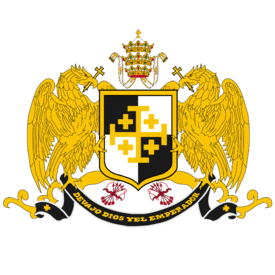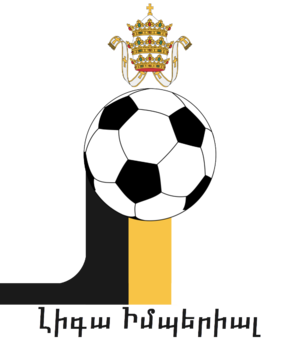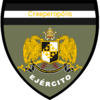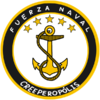Portal:Creeperopolis
¡Hola! ¡Bienvenidos a Creeperópolis!
Creeperopolis (Creeperian – Creeperian: Ծրեեպերօպոլիս; Creeperian – Iberic: Creeperópolis; Creeperian pronunciation: [kri.peɾˈo.po.lis]), officially the Holy Traditionalist Empire of Creeperopolis (Creeperian: Սանտո Իմպերիո Տրադիծիոնալիստա դե Ծրեեպերօպոլիս; Iberic: Santo Imperio Tradicionalista de Creeperópolis), is the largest nation in Sur and the 4th largest in the world by land area. Creeperopolis is bordered to the north by the Directorial Republic of Montcrabe, to the south by the Republic of Sequoyah and the Senvarian Sea, to the west by the Sea of Castilliano, the Kingdom of Salisford, and the Principality of El Salvador, and to the east by the Bay of Salvador and the Southern Ocean. Creeperopolis completely enclaves the client state and religious nation, artificially established by Creeperopolis, known officially as the State of the Church. Creeperopolis' capital and largest city is San Salvador located near the center of the country along the southern coast of Lake San Salvador and west of Lake Zapatista. As of 2020, Creeperopolis has a population of 532 million, making it the most populous nation in the world.
Creeperopolis is the world's second largest economy at ₡94.4 trillion colóns, second only to Quebecshire. The country continues to struggle with massive wealth inequality, rampant crime and crime rates, four ongoing internal armed conflicts, rampant government and corporate corruption, and unprecedented poverty rates of 20–25%. The official currency of Creeperopolis is the Creeperian colón and it has been since the relinquishment of the Creeperian Dollar following the 2003 Creeperian coup d'état. Creeperopolis has been commonly called terms such as a dictatorship, fascist, totalitarian, police state, and banana state, many of which have varying degrees of accuracy.
The 2022–23 Liga Imperial is the ongoing 69th season of the Liga Imperial, the top division of professional football in Creeperopolis. In celebration of the 2023 Copa Creeperiano, the 100th edition of the Copa Creeperiano, the size of the 2022–23 season was increased from sixteen clubs to twenty clubs. It was the first time the tournament was increased in size since its expansion from twelve clubs to sixteen clubs in 1960.
Fixtures for the season were announced by the National Football Association (ANF) on 1 July 2022. Read more...- Mayor of Chalatenango, Schafik Handal López (pictured) was arrested by the National Intelligence Directorate on charges of financially supporting the Deltinian Liberation Army.
- Professor Orlando Pareja Palau of Antonio José Sáenz Heredia University gave a lecture attacking and antagonized the government of Sequoyah, comparing it to Morova.
- The Deltinian Liberation Army accused the 25th Creeperian Army of indiscriminately killing Deltinian civilians. The DLA provided photos but the Ministry of Internal Affairs stated that the photos were clearly photoshopped and some were even photos of dead Creeperian civilians killed by the DLA.
- Hundreds Neo-Saelicists marched in the streets of Sonsonate celebrating the legacy of Castillianan dictator and caudillo Maximiliano Saelices Dávalos who ruled Castilliano from 1823 until 1845. After the march, 5 protestors were arrested on charges of assault while 14 Neo-Saelicists were arrested on charges of assault and conspiracy.
- The United Self-Defense Forces of Creeperopolis captured the Mara Salvatrucha controlled city of Colobador with little opposition.

Minister of Defense Adolfo Cabañeras Moreno reading orders to his officers during the Papal War, 1938.
- ...that Creeperopolis is one of the most densely populated countries in Terraconserva and on the Southern Landmass?
- ...that Creeperopolis uses the Colón as its currency?
- ...that Creeperopolis is currently embroiled in ongoing internal conflicts?
- ...that Creeperopolis is known worldwide for its high quality coffee and sugar?
- ...that Creeperopolis is actively exterminating mosquitos?
- ...that Creeperopolis used to be a republic from 1729-1730?
- ...that Creeperopolis is one of two nations with Spanish as a dominant language?
- ...that Creeperopolis currently constitutes the death penalty for abortion?













